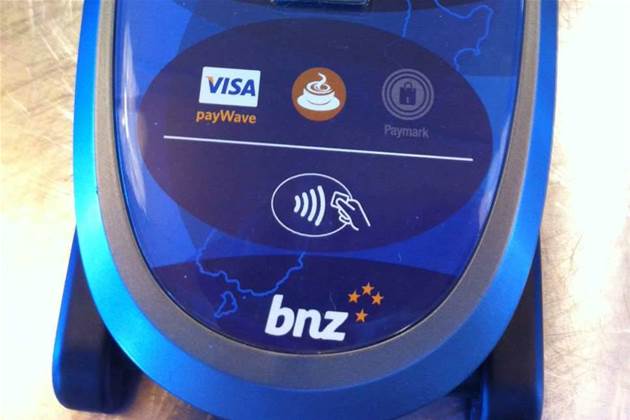NAB subsidiary Bank of New Zealand has kicked off a near-field communications (NFC) payments trial in partnership with Vodafone NZ, Visa and terminal supplier Paymark.

The trial would see approximately forty people given Samsung Galaxy II S handsets to make the payments of under NZ$80 at two cafes in Auckland and Wellington.
The phones were provided by Vodafone’s research and development division in the UK and retain in-build NFC capability, unlike those in Australia.
According to Bank of NZ head of innovation Paul Tait, the payments functionality sits on a secure chip on the SIM card in the NFC-enabled phone.
Users will have to top up money available on the SIM card in order to make payments.
He told iTnews the bank had looked at other ways of implementing the NFC functionality, such as MicroSD cards and adapters for iPhones and Blackberries, but decided they were too fiddly.
To enable the payments, merchants would use an NFC reader connected to the EFTPOS payments network.
Tait said the system is “almost more secure than credit cards” as users would be more aware of their spending habits using a phone.
The bank’s NFC project remains a while from commercialisation though it hopes the trial will determine how to best balance security and convenience for users.
Currently, there is no fixed date for introduction of NFC payments, but Tait said the technology will likely take off over the next eighteen months.
The technology could ultimately be extended beyond payments, to loyalty schemes, ticketing for sporting and cultural events and public transport.
Bank of NZ’s implementation is the latest in several trials run by the NAB group.
In 2008, the bank’s Australian parent company trialled NFC-enabled Sagem mobiles with SIM cards linked to the users’ bank accounts but never commercially deployed the application.
Commonwealth Bank would likely become the first to commercialise the technology in Australia. Its forthcoming ‘Kaching’ iPhone app will link to a user’s Facebook account for transfers and use an NFC-capable case for contactless payments.



.png&h=140&w=231&c=1&s=0)

_(22).jpg&h=140&w=231&c=1&s=0)



_(26).jpg&w=100&c=1&s=0)

 iTnews Executive Retreat - Security Leaders Edition
iTnews Executive Retreat - Security Leaders Edition












_(1).jpg&h=140&w=231&c=1&s=0)



